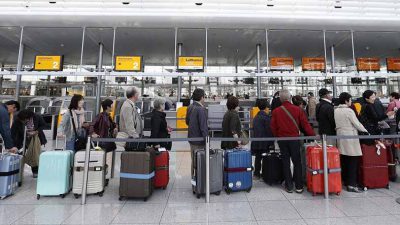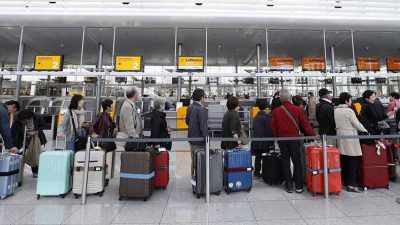2018 Deemed a Record Year for Flyers
Last year saw a record 4.4 billion people take to the skies
August 4, 2019

The International Air Transport Association (IATA) recently released figures for 2018 showing that global air is on the rise with no stopping in sight as a record busting 4.4 billion passengers traveled on scheduled flights, marking an increase of 6.9 percent from 2017. The spike, the association said, was driven in part by sharp reductions in the cost of air travel, although improvements in connectivity and efficiency also played a part.
IATA’s World Air Transport Statistics report, found that 81.9 percent of all available airline seats were filled last year, and that the number of city pairs connected by direct flights doubled between 1998 and 2017. In another finding the report noted the fuel efficiency improved by around 12% compared to 2010.
”Airlines are connecting more people and places than ever before. The freedom to fly is more accessible than ever. And our world is a more prosperous place as a result. As with any human activity this comes with an environmental cost that airlines are committed to reducing. We understand that sustainability is essential to our license to spread aviation’s benefits. From 2020 we will cap net carbon emissions growth. And, by 2050, we will cut our net carbon footprint to half 2005 levels. This ambitious climate action goal needs government support. It is critical for sustainable aviation fuels, new technology and more efficient routes to deliver the greener future we are aiming for,” said Alexandre de Juniac, IATA’s Director General and CEO. As for the real cost of air transport,– that been reduced by over 50 percent during the last two decades.
American Airlines transported the most passengers in 2018 when calculated by total distance flow, followed by Delta Air Lines, United Airlines, Emirates, and Southwest Airlines.
The top five airlines ranked by total scheduled passenger miles flown, were:
1. American Airlines (330.6 billion)
2. Delta Air Lines (330 billion)
3. United Airlines (329.6 billion)
4. Emirates (302.3 billion)
5. Southwest Airlines (214.6 billion)
The top five international/regional passenger airport-pairs were all within the Asia-Pacific region again this year:
1. Hong Kong – Taipei Taoyuan (5.4 million, down 0.4% from 2017)
2. Bangkok Suvarnabhumi – Hong Kong (3.4 million, increased 8% from 2017)
3. Jakarta Soekarno-Hatta – Singapore Changi (3.2 million, decreased 3.3% from 2017)
4. Seoul-Incheon – Osaka-Kansai (2.9 million, an increase of 16.5% from 2017)
5. Kuala Lumpur–International – Singapore Changi (2.8 million, up 2.1% from 2017)
The top five domestic passenger airport-pairs were also all in the Asia-Pacific region:
1. Jeju – Seoul Gimpo (14.5 million, up 7.6% over 2017)
2. Fukuoka – Tokyo Haneda (7.6 million, an increase of 0.9% from 2017)
3. Melbourne-Tullamarine – Sydney (7.6 million, down 2.1% from 2017)
4. Sapporo – Tokyo-Haneda (7.3 million, decreased by 1.5% from 2017)
5. Beijing Capital – Shanghai Hongqiao (6.4 million, up 0.4% from 2017)
The top five nationalities traveling (international routes) are now:
o United Kingdom (126.2 million, or 8.6% of all passengers)
o United States (111.5 million, or 7.6% of all passengers)
o People’s Republic of China (97 million, or 6.6% of all passengers)
o Germany (94.3 million, or 6.4% of all passengers)
o France (59.8 million, or 4.1% of all passengers)
Airline Alliances:
Star Alliance maintained its position as the largest airline alliance in 2018 with 21.9% of total scheduled traffic (in RPKs), followed by SkyTeam (18.8%) and oneworld (15.4%)




